IUCN/SSC Otter Specialist Group Bulletin

©IUCN/SCC Otter Specialist Group
Volume 39 Issue 3 (September 2022)
Citation: Naidu, R., Trivedi, K., Mandavia, A., Singh, S., Bharos, A.M.K., Jadeja, S., and Kshirsagar, N. (2022). Distribution of the Asian Small-Clawed Otter (Aonyx cinereus) in Chhattisgarh, India. IUCN Otter Spec. Group Bull. 39 (3): 171 - 178
Distribution of the Asian Small-Clawed Otter (Aonyx cinereus) in Chhattisgarh, India.
Ravi Naidu1, Krunal Trivedi2*, Ameet Mandavia1, Saurabh Singh3, A.M.K. Bharos4, Shivbhadrasinh Jadeja5, and Nileshkumar Kshirsagar6*
1Conservation & Research of Wilderness Foundation, Jagdalpur, Bastar (494001), Chhattisgarh, India
2Nature Club Surat, 81, Sarjan Society, Parle Point, Surat (395007), Gujarat, India
3Jashpur Wildlife Welfare Foundation, Jashpur Nagar (496331), Chhattisgarh, India
4State Co-ordinator, IBCN (BNHS) & AWC (Wetland International), Raipur (492007),
Chhattisgarh, India
5Savage Ecology Foundation, Surendranagar (363001), Gujarat, India
6District magistrate (Indian Administrative Service), Mahsamund District (493445),
Chhattisgarh, India
*Corresponding Author Email: krunal.trivedi.7567@gmail.com
(Received 24th March 2022, accepted 2nd May 2022)
Abstract: The Asian small-clawed otter (Aonyx cinereus) is the smallest among 13 species of otters. Very little information is available about the status and distribution of Asian small-clawed otters in Chhattisgarh. The current study reports the presence of otters at 20 different sites in 5 districts of Chhattisgarh. To confirm the presence of the otters in this region, we used camera traps, sign surveys, and direct sightings. Threats like habitat destruction, sand mining, and extensive fishing were identified. Systematic otter surveys are needed in this region to make an accurate population assessment and to create an otter-specific conservation plan.
Keywords: Aonyx cinereus, Chhattisgarh, Otter distribution, Conservation
INTRODUCTION
Otters have obtained noticeably little interest for field-based studies throughout Asia, regardless several species of otters occurring in the region (Foster-Turley, 1992). As a result, scientific information on otters in Asia has generally been lacking (Nawab and Gautam, 2008). Among the 13 species found across the world, three species of otters: the Smooth-coated otter (Lutrogale perspicillata), the Asian Small-clawed Otter (Aonyx cinereus), and the Eurasian Otter (Lutra lutra) have been reported from India (Menon, 2014).
The Asian small-clawed otter is the smallest otter in the world (Harris, 1968; Foster-Turley and Santiapillai, 1990). The IUCN Red List classifies the Asian or Oriental Small-clawed Otter as Vulnerable, and it is protected under Schedule I of the Wildlife (Protection) Act, 1972, and Appendix I of the Convention on International Trade in Endangered Species (CITES). The Asian small-clawed otter primarily preys on aquatic animals such as crabs, fish, frogs, arthropods, mammals, and snails (Kruuk et al., 1994; Aadrean et al., 2010; Hon et al., 2010). Rivers, streams, peat swamps, mangrove forests, rice fields, ditches, and fishponds are among the natural and human-altered habitats used by small-clawed otters (Hussain et al., 2011). The destruction or degradation of important habitat as a result of shifting land-use patterns and other development activities are potential threats to the survival of Asian small-clawed otters throughout Asia (Wright et al., 2015). Loss of habitat from the cultivation of tea and coffee plantations in higher altitudes, loss of mangroves in coastal areas due to aquaculture and expanding human settlements, and siltation of smaller hill streams due to deforestation are the main threats to these otters in India (Wright et al., 2015).
In the year 2000, the state of Chhattisgarh was created out of undivided Madhya Pradesh. Chhattisgarh is one of India’s most heavily forested states, with a total land area of 135,198 square kilometers, of which 44 percent is forested. Biogeographically, Chhattisgarh is straddled in between India’s central highlands and the Eastern Ghats. The state’s northern and southern regions are hilly, while the center is a rich plain (Chandrakar and Dhuria 2021) The Asian small-clawed otter was reported for the first time from Chhattisgarh at the Udanti Sitanadi Tiger Reserve (Suraj et al., 2020). However, there is little available information about their current distribution across the entire state of Chhattisgarh. This study assessed the status, distribution, and potential threats to Asian small-clawed otters in Chhattisgarh.
METHODOLOGY
During an extensive field survey for bird study in the Kanger Valley National Park led by the first author, opportunistic data was collected based on a direct sighting and indirect signs of Asian Small-clawed otters in 2017. Later on, otter-specific field surveys were conducted on foot by the authors across various areas of Chhattisgarh to collect evidence for the presence of otters. Between 2017 and 2020, fieldwork was undertaken in the winter (November - February) and summer (March - May) months. Information regarding otter sightings was collected from local villagers, fisherfolks, forest department staff, etc. as a primary data. All the suggested location and nearby potential sites were visited by the team to confirm the presence of otters in the area. As per the primary data collection, random approach was followed to collect any sign of otter’s presence (spraints and tracks) in the study sites. It included a spraint survey and camera trapping across the otter’s range, which provided a reliable picture of the otter’s distribution.
During monsoon, certain field sites were inaccessible, furthermore, the chances of indirect signs such as spraint and tracks getting washed away in the rains were high hence, the survey was avoided during monsoon season. We recorded geographic coordinates of direct sightings, otter tracks, and spraint of otters, using hand-held Garmin GPS eTrex10. Three Cuddeback X Change model camera trap with infrared flash was used to collect photographic evidence at few sites. Species confirmation was done with the help of available standard literature from Menon (2014).
RESULTS
Otter tracks (n = 16), spraints (n = 48), dens (n = 13), and direct sightings (n = 1) were reported from 20 different sites between March 2017 and November 2020; among 5 out of 27 districts of Chhattisgarh (Fig. 1). The study showed distribution of Asian small-clawed otters mainly near freshwater streams in hilly terrain (Fig. 2). Seventeen sites with tracks (Fig. 3) and spraints (Fig. 4) of otters were rock or sand bank while the remaining three sites were paddy fields. Cavities in the rocky banks were utilized as a den by the otters (Fig. 5). Spraint was the most common indirect sign of otter presence reported at all 20 sites. During the survey, informal social interviews were conducted to collect information about otters in their respected areas. Respondents were shown photographs of otters to confirm their identification. The social survey showed frequent interactions between otters and fishermen while fishing in the water streams. Otters were also reported to damage the fishing nets of fishermen. As per one of the respondents, two otters were killed by the fishermen in the past for damaging their fishing nets while predating on fishes. It was also reported that in certain sites, traps were laid to catch otters. We assume the traps were laid to eliminate otters from the area or for poaching them. Otter presence was also documented at three sites through camera traps installed based on indirect signs (Fig. 6). See Table 1.
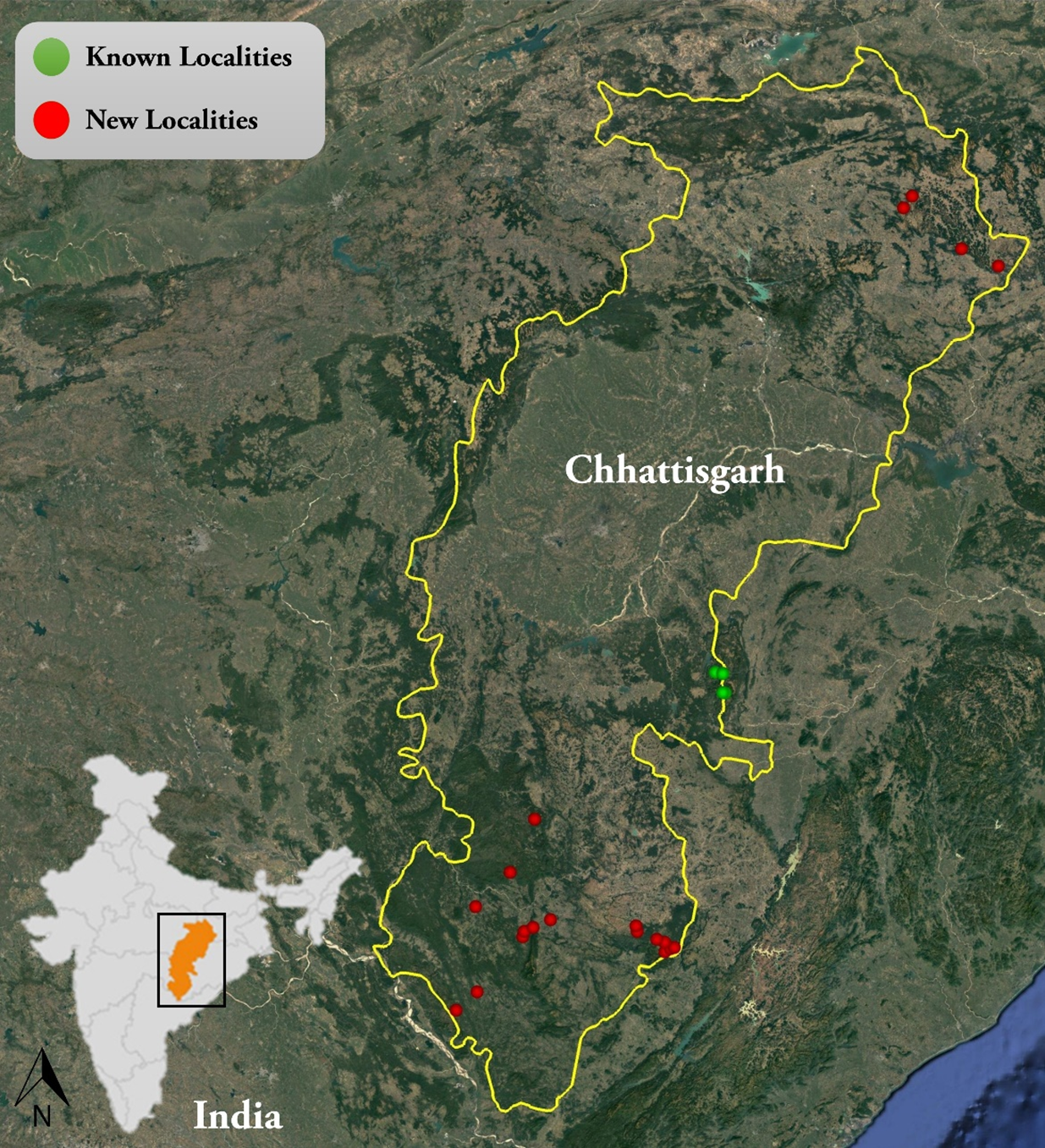
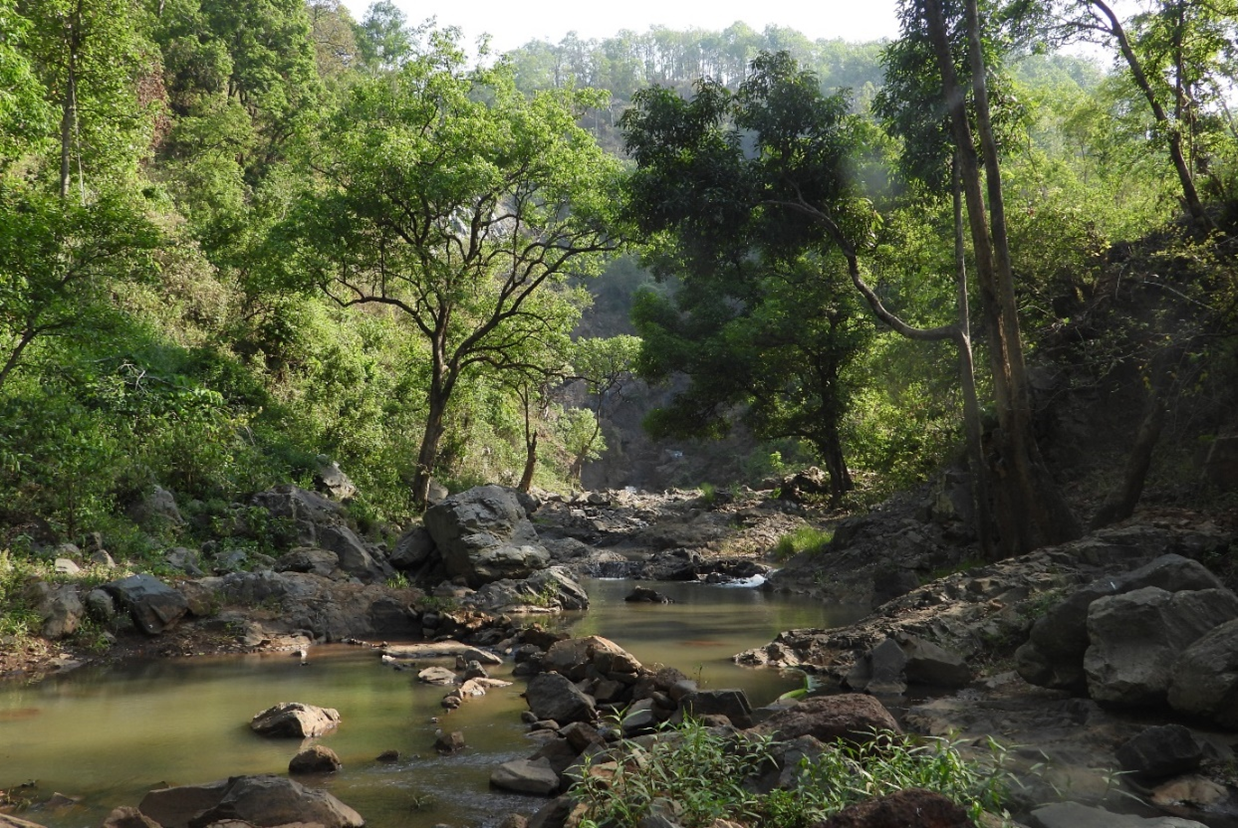
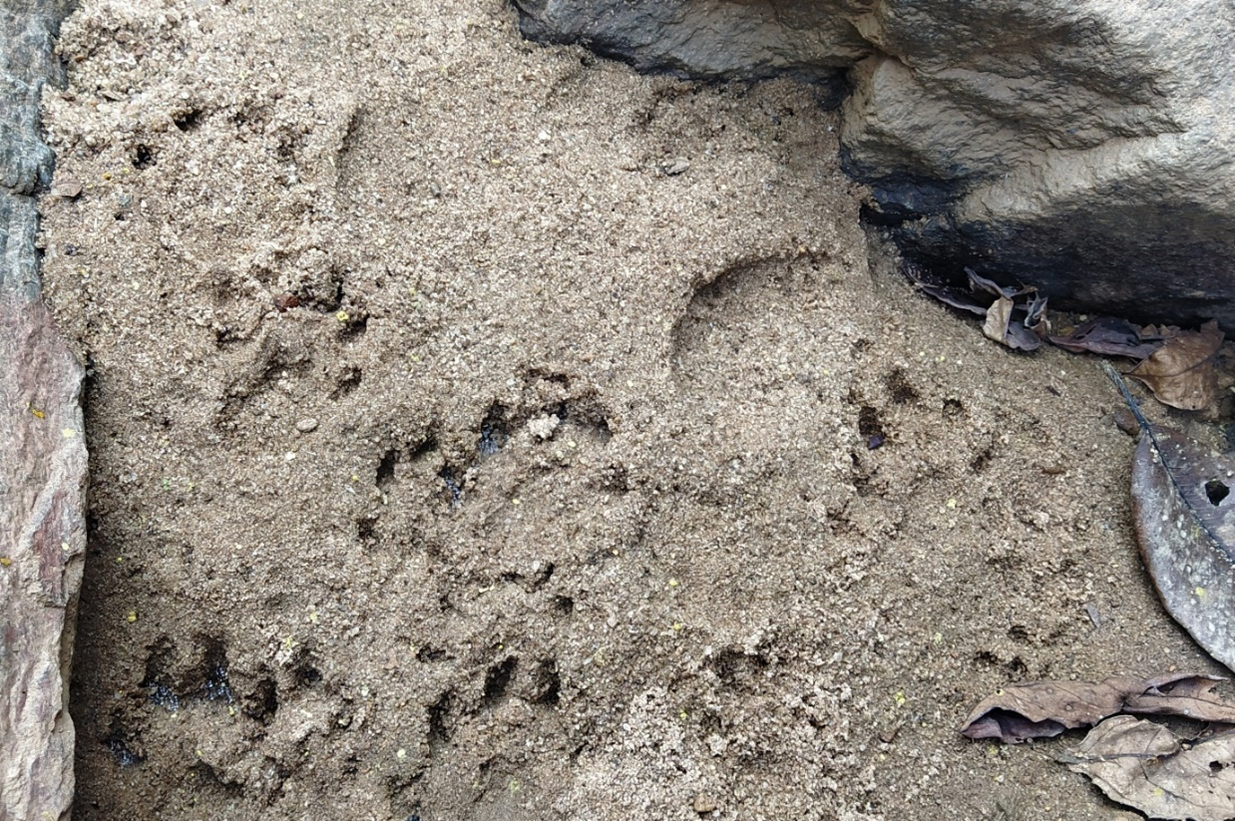
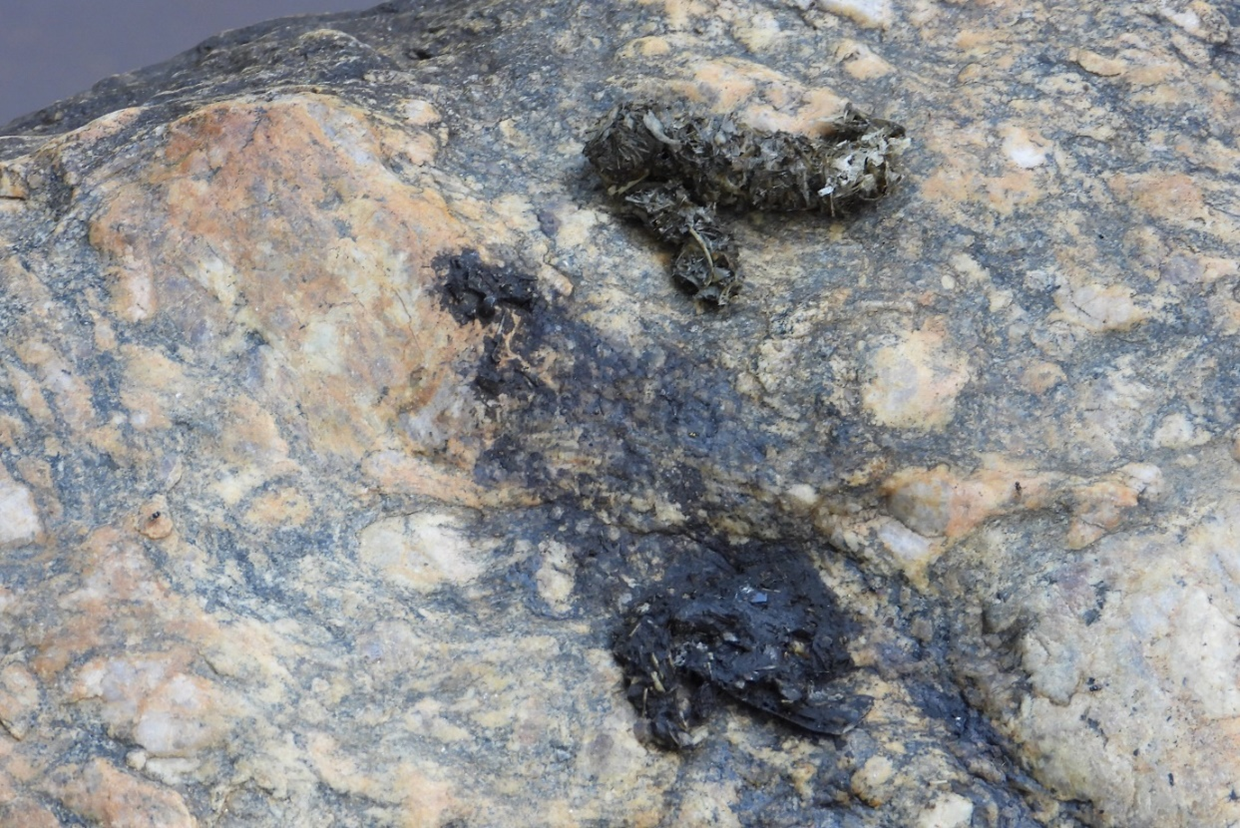
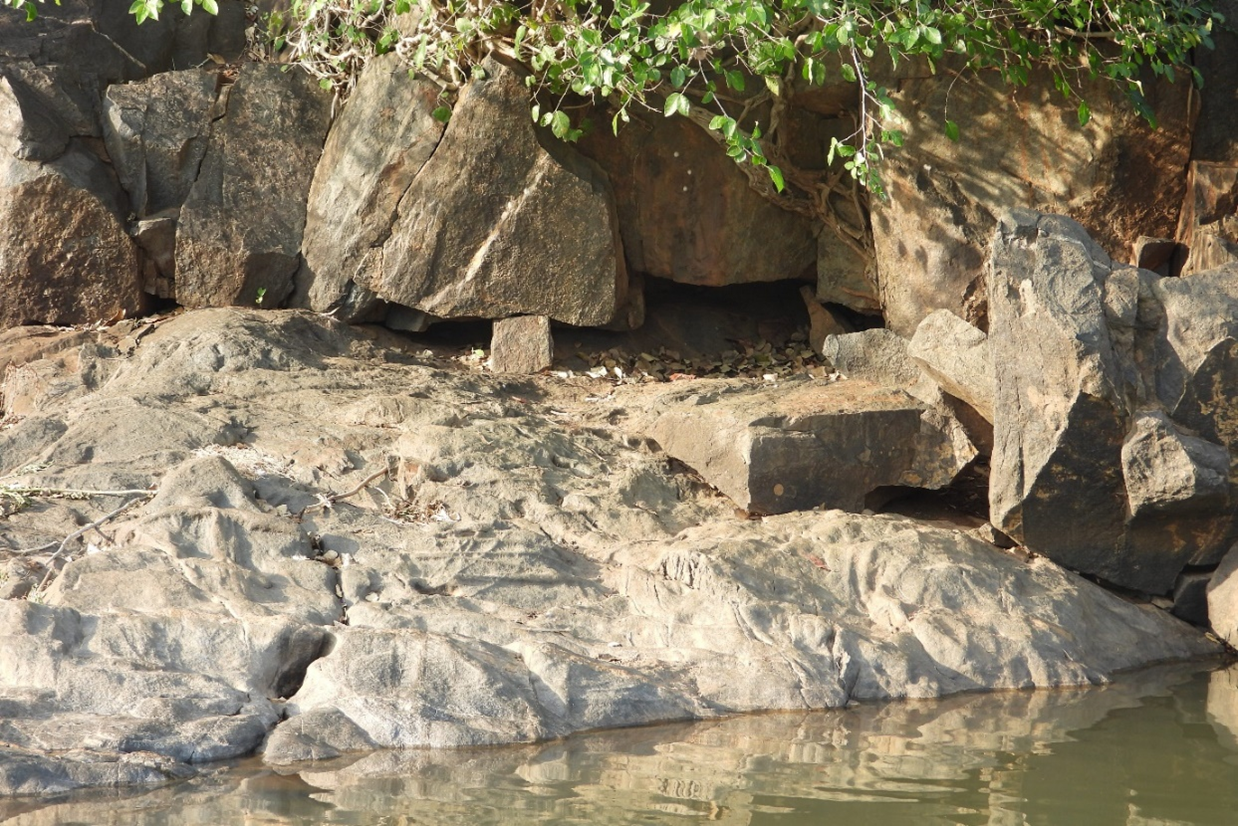
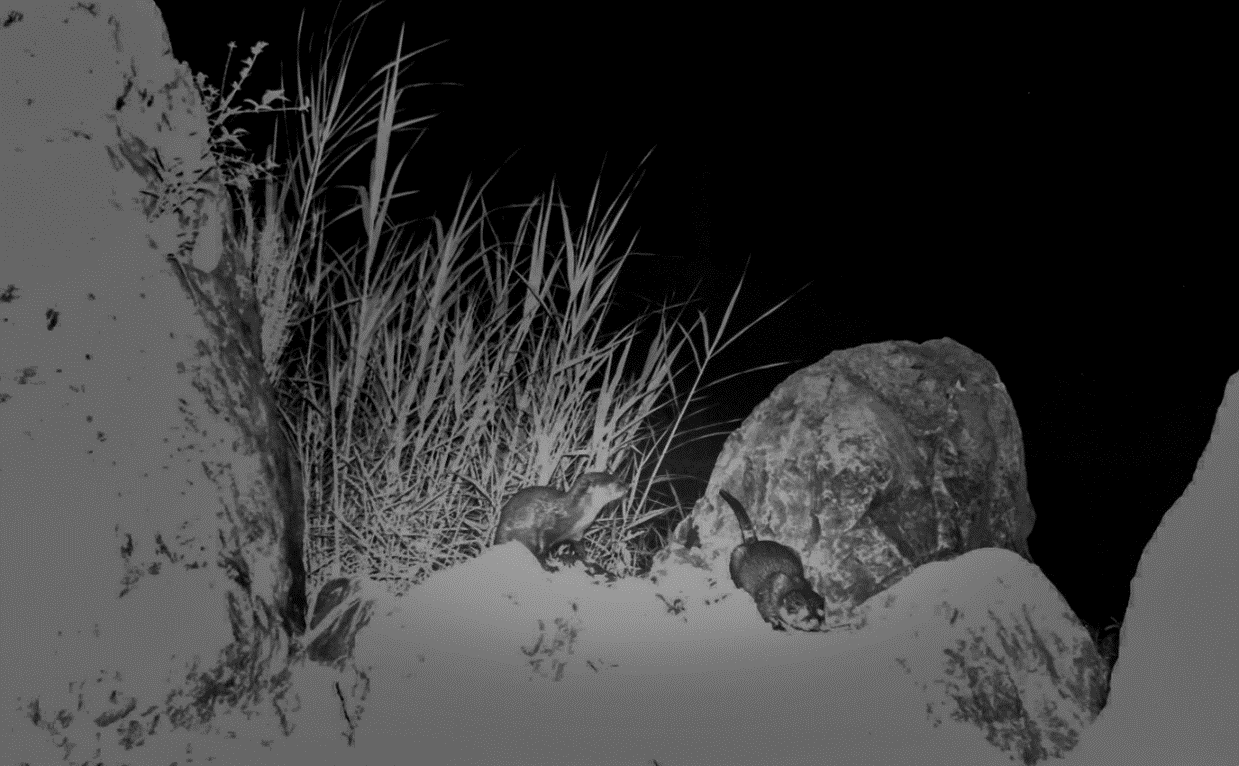
It is vital to acknowledge the survey’s limitations, since the study locations were dynamic systems and thus the species occurrence and detection were confined by seasonality and time of day due to variation in activity levels and behavior of the study species. Since otters are particularly sensitive to disturbance, including the presence of surveyors, they may have been under-recorded.
DISCUSSION
The Asian small-clawed otter was the only species of otter directly identified in the study area. This study did not find any evidence for the presence the Eurasian or the Smooth-coated otters. However, the absence of otter indicators in one place does not necessarily imply that there are no otters in that area (Hussain & Choudhury, 1997). This study indicates that the northern and southern region have higher otter populations than the central region of Chhattisgarh because of the available hilly terrain and forest habitat in the region. Our observations suggest that Chhattisgarh is a stronghold for Asian Small-clawed Otter. However, there is a growing body of evidence that human-otter conflict is increasing. Other potential threats such as habitat destruction, sand mining, poaching, extensive fishing, etc. need to be addressed by the policymakers. Being one of the top predators in the Chhattisgarh aquatic ecosystem, otters can be a crucial keystone species for monitoring ecosystem health. Therefore, robust population assessment of otters is strongly recommended for guiding their future conservation effort and for monitoring the ecosystem health of the Chhattisgarh. Furthermore, regular monitoring of existing otter habitats must be ensured by developing the capacities of local community members to assist in the compilation of a database of otter population status. The availability of this vital information to decision-makers in prominent entities at the national and international levels would aid in the implementation of an otter conservation efforts for Chhattisgarh and other similar places. Efforts shall be made to develop a proper conservation strategy to save this elusive and important animal species.
ACKNOWLEDGMENTS - Authors are also sincerely thankful to Chhattisgarh Forest Department and Jashpur Wildlife Welfare Foundation, Nature Club Surat for their support. KT would like to thank Mr. Snehal Patel for his support and guidance. Thanks to Prateek Smith Mandal, Mahesh Kashyap, Atul Sahani, Sankalp Vishwkarma, Sukhlal Kashyap for field assistance.
REFERENCES
Aadrean, S.S., Salsabila A., Janra, R.M.N. (2010). Tracks and other signs of otters in rice fields in Padang Pariaman, West Sumatra: a preliminary study. IUCN Otter Spec. Group Bulletin 27: 6-11 https://www.iucnosgbull.org/Volume27/Aadrean_et_al_2010.html
Chandrakar, A.K., Dhuria, S. (2021). Threatened bird diversity of Chhattisgarh, India. Life sciences International Research Journal 8(2): 41-46.
Foster-Turley, P., Santiapillai, C. (1990). Otters: An Action Plan for Their Conservation. Action plan for Asian otters. IUCN, Gland, Switzerland.
Foster-Turley P (1992). Conservation aspects of the ecology of Asian small-clawed and smooth otters on the Malay Peninsula. IUCN Otter Spec. Group Bulletin 7: 26-29. https://www.iucnosgbull.org/Volume7/Foster_Turley_1992.html
Harris, C.J. (1968). Otters: A study of the Recent Lutrinae. London. Weidenffeld and Nicolson, United Kingdom. 307 pp.
Hussain S.A., Choudhury B.C. (1997). Distribution and status of the smooth-coated otter Lutra perspicillata in National Chambal Sanctuary, India. Biological Conservation 80(2): 199-206. https://doi.org/10.1016/S0006-3207(96)00033-X
Hon, N., Neak, P., Khov, V., Cheat, V. (2010). Food and habitat of Asian small-clawed otter in northeastern Cambodia. IUCN Otter Spec. Group Bulletin 21: 12-23. https://www.iucnosgbull.org/Volume27/Hon_et_al_2010.html
Hussain S.A., Gupta S.K., DeSilva P.K. (2011). Biology and ecology of Asian small-clawed otter Aonyx cinereus (Illiger, 1815): a review. IUCN Otter Spec. Group Bulletin 28: 63-75 https://www.iucnosgbull.org/Volume28/Hussain_et_al_2011.html
Kruuk H., Kanchanasaka B., O’Sullivan S., Wanghongsa S. (1994). Niche separation in three sympatric otters Lutra perspicillata, L. lutra and Aonyx cinerea in Huai Kha Khaeng, Thailand. Biological Conservation 69:115-120. doi: https://doi.org/10.1016/0006-3207(94)90334-4
Menon, V. (2014). Indian mammals: a field guide. Hachette India Book Publishing India Pvt. Ltd. 300-303.
Nawab, A., Gautam, P. (2008). Otters: can they be saved? In: Sengupta, M., Dalwani, R. (eds.) Proceedings of Taal 2007: The 12th Lake Conference: 591-596.
Suraj, M., Ahmed, M., Bux, F. (2020). First photographic evidence of Asian Small-clawed Otter from Udanti Sitanadi Tiger Reserve. Mammal Tales #23, In: Zoo’s Print 35(10): 21-25.
Wright L, de Silva P., Chan B, Lubis I.R. (2015). Aonyx cinereus. The IUCN red list of threatened species 2015: e.T44166A21939068. doi: http://dx.doi.org/10.2305/IUCN.UK.2015-2.RLTS.T44166A21939068.en
Résumé: Distribution de la Loutre Cendrée d’Asie (Aonyx cinereus) au Chhattisgarh, en Inde
La loutre cendrée (Aonyx cinereus) est la plus petite des 13 espèces de loutres. Très peu d’informations sont disponibles sur le statut et la distribution des loutres cendrées dans le Chhattisgarh. La présente étude rapporte la présence de loutres sur 20 sites différents dans 5 districts du Chhattisgarh. Pour confirmer la présence des loutres dans cette région, nous avons utilisé des pièges photographiques, des indices de présence et des observations directes. Des menaces telles que la destruction de l’habitat, l’extraction de sable et la pêche intensive ont été identifiées. Des relevés systématiques de loutres sont nécessaires dans cette région pour effectuer une évaluation précise de la population et concevoir un plan de conservation spécifique pour la loutre.
Revenez au dessus
Resumen: Distribución de la Nutria de Uñas Pequeñas Asiática (Aonyx cinereus) en Chhattisgarh, India
a nutria de uñas pequeñas asiática (Aonyx cinereus) es la más pequeña de las 13 especies de nutria. Se cuenta con muy poca información sobre el status y distribución de la nutria de uñas pequeñas asiática en Chhattisgarh. Este estudio reporta la presencia de nutrias en 20 sitios diferentes en 5 distritos de Chhattisgarh. Para confirmar la presencia de las nutrias en ésta región, usamos cámaras-trampa, relevamientos de signos, y avistajes directos. Identificamos amenazas como destrucción de hábitats, minería de arena, y pesca extensiva. Se necesitan relevamientos sistemáticos en ésta región para realizar una evaluación poblacional confiable y crear un plan de conservación específico para las nutrias.
Vuelva a la tapa